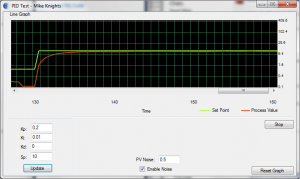Unfortunately one of the motors on the quadcopter had died. This directly affected the tuning of the PID controller and until I can get my hands on a spare one, or more specifically install one next week I can’t test.
For the moment I have focused my attention on one of the substantial problems I have encountered over the last weeks is bad network reliability, where how of the blue I would lose connection to the PI on the LAN. Considering I’m using adafruits web ide that needs a connection to bitbucket to function correctly this has caused many issues.
I initially thought the problem may be with the router I was using, however after switching it out for a newer one I have still being having same issues. So I changed my focus to the PI as the likely cause of the problem.
I have thus far been using wicd, which is a console based wireless networking client that allows easy connection to new networks. This automatically switches between the networks and monitors the connection. To rule this out I’ve switched the manual approach of entering the wireless settings manually.
I have also seen various posts and discussions about the some wireless adapters dropping their connection randomly due to power management settings. For this reason I have disabled the power management by placing “wireless-power off” in my /etc/network/interfaces.
So far so good, It seems to be working very well. However being Easter holidays the UNI is shut and I won’t be able to test this properly until it is open again next week.
